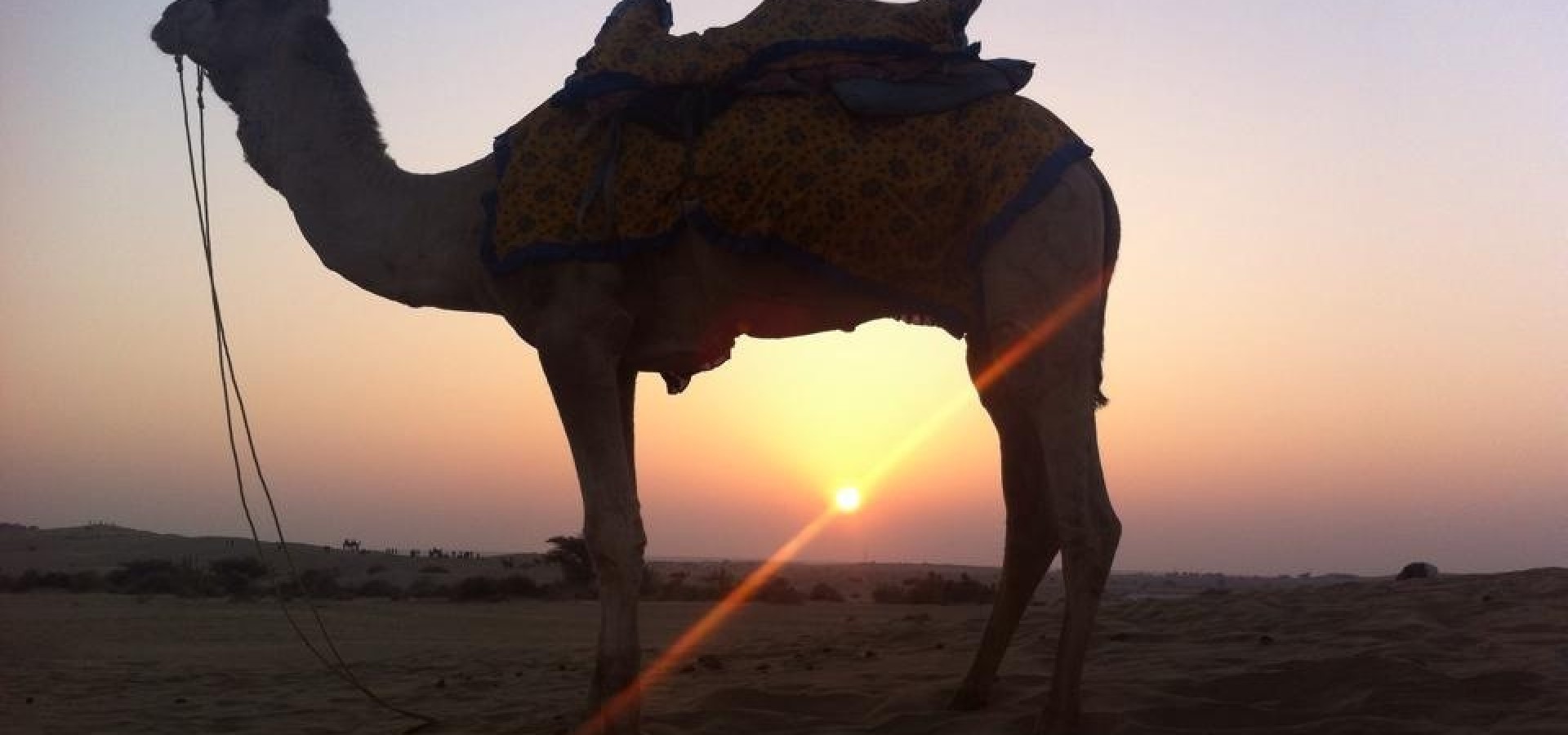Jaisalmer :
Monuments of Jaisalmer are well known for their architectural splendour. Located far out in the Thar Desert, Jaisalmer rises like a mirage from the sands, a huge fortified city in the middle of nowhere. Apart from the fort, there are a number of other monuments at Jaisalmer which evidence the might and grandeur of the Rajput warriors. The town was founded by Prince Jaisal in 1156, and functioned as the capital of the Bhatti Rajputs. It grew to be a major trade centre for camel trains, linking the routes from India to Egypt, Arabia, Persia, Africa and Europe and controlling the way into northern India across the desert.
The group of Jain temples found within the fort date back to the twelfth and fifteenth century. The oldest is dedicated to Lord Parshvanatha.
Salim Singh ki Haveli :
Built in 1815, possibly on the core of an earlier building of the late seventeenth century, it was the residence of the influential Mohta family. It has a beautifully carved roof and exquisite details in the carvings with brackets in the form of peacocks. The entrance is guarded by a large stone elephant. The Haveli is often called the Jahazmahal because the upper portion of the house oversails boldly like a ship’s prow. The top two stories – the Kanchanmahal and Rangamahal – were once adorned with glass mosaics and bright colours. The Haveli is currently still occupied.
Nathmalji-ki-Haveli :
It was built for the prime minister of the priestly state of Jaisalmer in 1885. The entrance is flanked by stone elephants and the entire facade is carved with a riot of ornamental detail – soldiers, horses, elephants, flowers and birds. The building was designed and built by two craftsmen-architects Hathi and Lulu. One architect carved on the left side and the other on the right, but the overall impact is of complete harmony. Unlike the usual style, the house is built of rock and not dressed stone. In the main room at first-floor level the entire front wall is a huge, single rock carved into a bay. The inner walls are counter pointed with beautiful miniatures.
The largest and most elaborate of all the Havelis is the Patwon ki Haveli. It was built in 1805 as one of a group of five built for the Patua brothers. The entire front is carved with elaborate detail. It stands in a narrow alley and has beautiful murals.
The delicate pagoda like Tazia Tower rises from Badal Mahal (Cloud Palace). Rising in its five-tiered splendour, with each storey graced by a delicately carved balcony, the tower is of historical significance. Muslim craftsmen built it in the shape of a Tazia and gifted it to their royal patron.
Sam Sand Dunes :
Sam Sand Dunes, 42 km away from Jaisalmer, is the most popular excursion to see the totally sandy, bush-less desert. It has a truly glorious stretch of sweeping sand dunes. It is best to be here at sunrise or sunset, and many camel safaris spend a night at the dunes. The best way to see this and other sights around Jaisalmer is to take a camel safari. The standard trip lasts for 4 days and three nights, and offers the opportunity to explore the area in an authentic and leisurely fashion, with entertainment by folk performers, visits to villages, and chatter from colourful guides thrown in. However you can also day trip and go by car. Hordes of tourists arrive just before sunset. Camels can be hired easily and you may capture a favourite shot picturing a lone camel on a desert track with the setting sun in the backdrop. Despite the tourist throng, the place has not lost its magic. The desert festival held some time in February each year is a big draw; it is full of fun, colour and laughter, cultural events and competitions.




